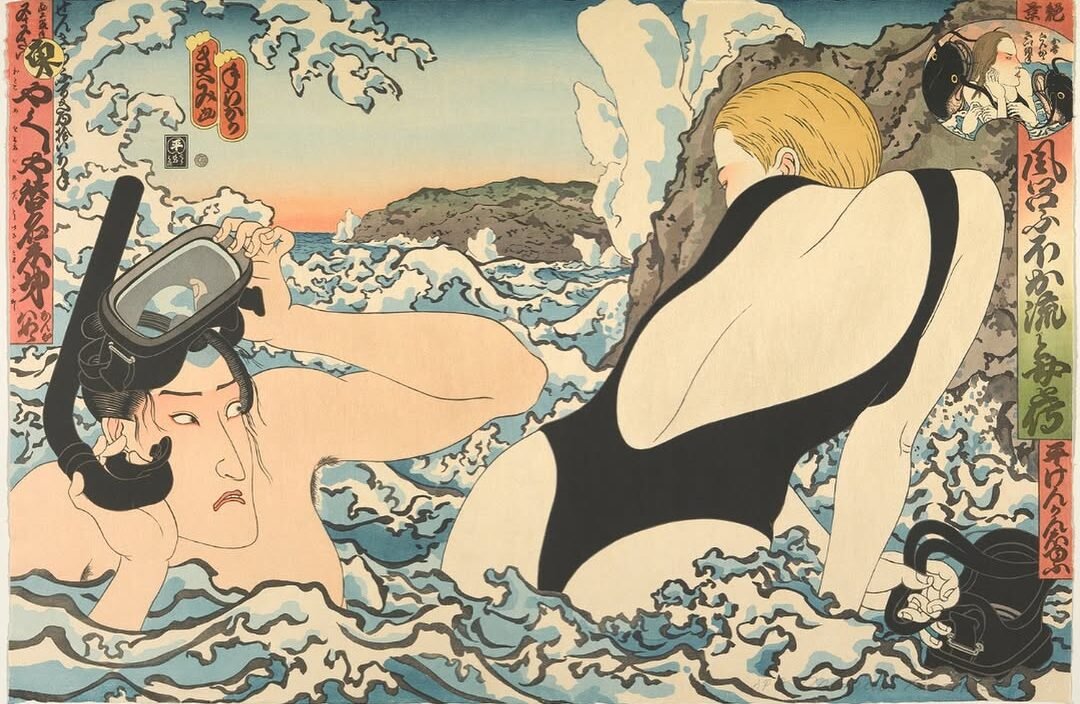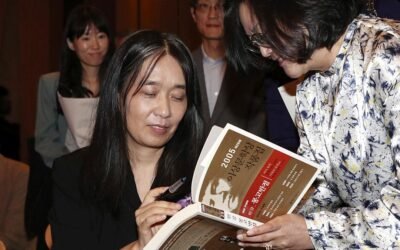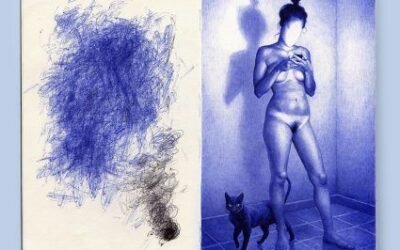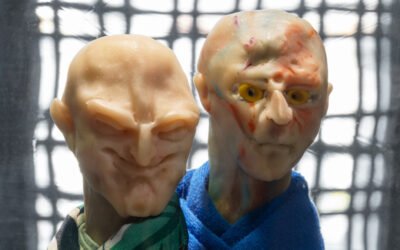Masami Teraoka’s View From Here to Eternity (1993) exemplifies his unique synthesis of traditional Japanese techniques and contemporary Western iconography, situating his work within the global discourse on identity, gender, and cultural hybridity.
After receiving classical training in Japan and relocating to the U.S. in the early 1960s, Teraoka developed a distinctive style that draws from ukiyo-e aesthetics while incorporating the visual vocabulary of American Pop Art. His artworks often reframe iconic Western imagery, transforming it into critical reflections on modern-day cultural tensions.
A Cinematic Scene Reimagined Through a Cross-Cultural Lens
In View From Here to Eternity, Teraoka revisits the iconic beach scene from the 1953 Hollywood film, repositioning it within a Japanese visual narrative. The image — a man admiring a woman emerging from the waves — echoes familiar tropes of desire and voyeurism. However, by rendering it in ukiyo-e-inspired detail, Teraoka complicates the dynamic, inviting viewers to interrogate how cultural values are encoded in imagery.
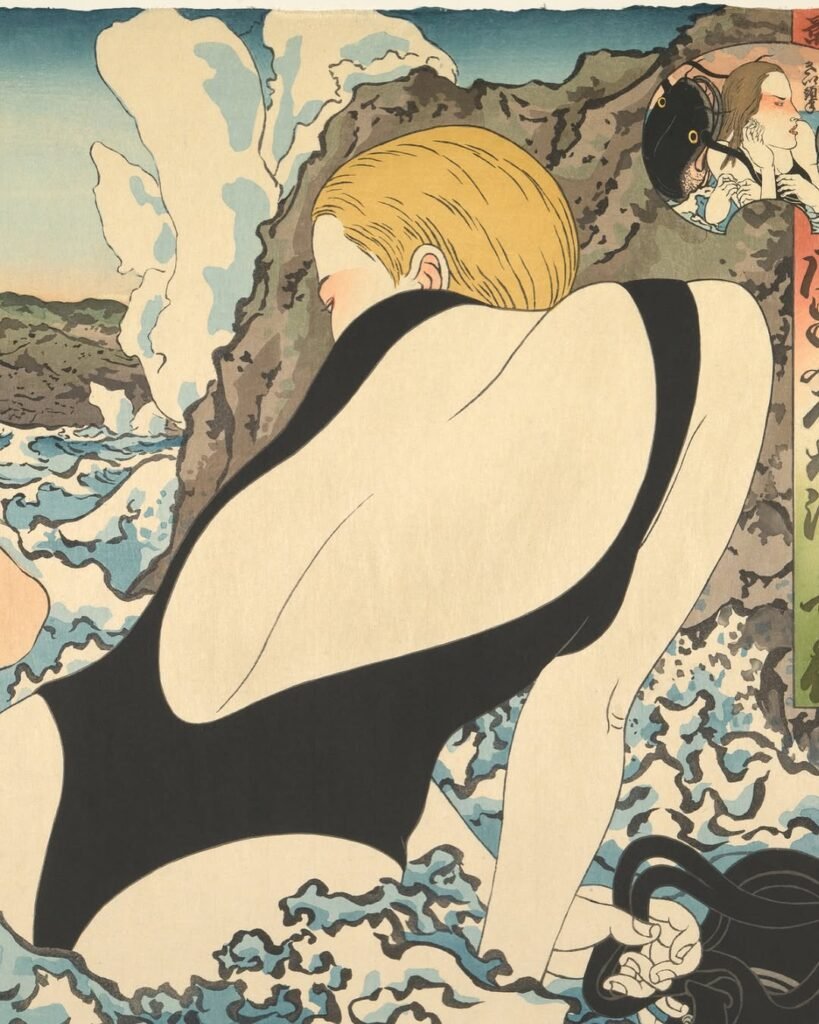
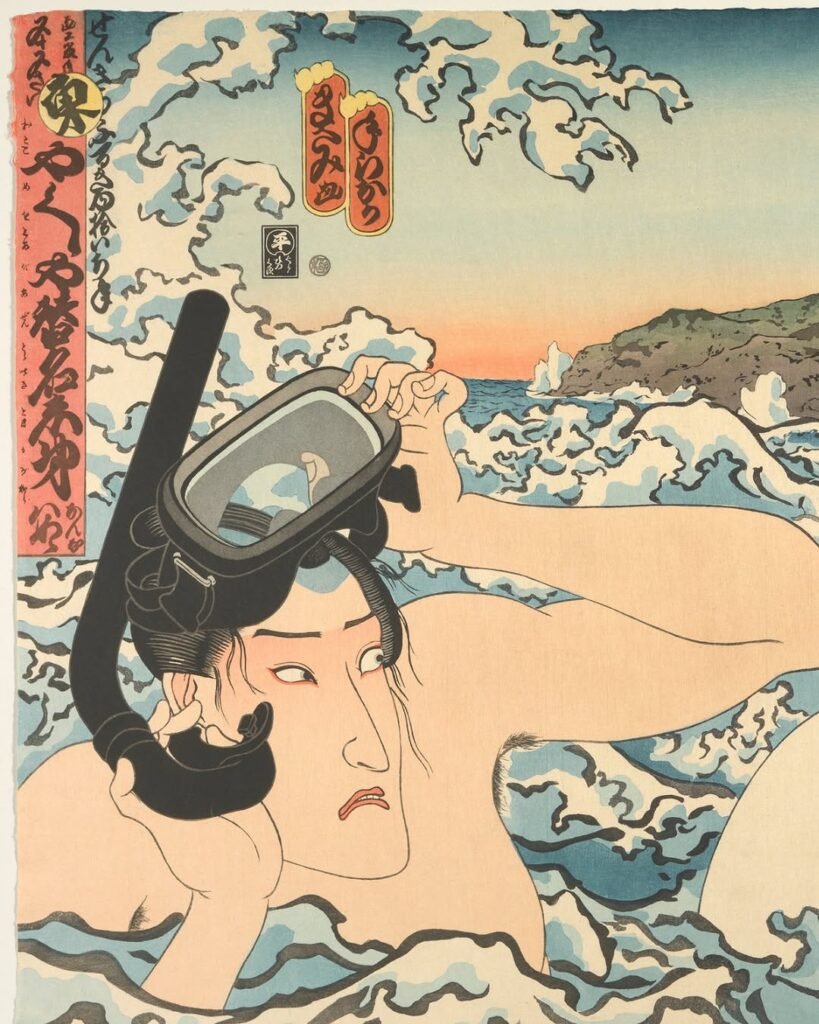
Pop Aesthetics with Purpose: Beyond Surface-Level Representation
Teraoka’s statement — “To make a strong statement, art needs timeless aesthetic qualities” — encapsulates his approach. Rather than merely depicting social and cultural themes, he elevates them through a refined formal language. This strategy enables his work to resonate across time and space, simultaneously rooted in tradition and radically contemporary.
Cultural Hybridity as Critical Framework
The strength of Teraoka’s practice lies in its ability to provoke dialogue about cultural displacement, modernization, and visual consumption. By merging East and West, traditional and pop, his art becomes a site of negotiation — not only of aesthetics, but of meaning itself.

